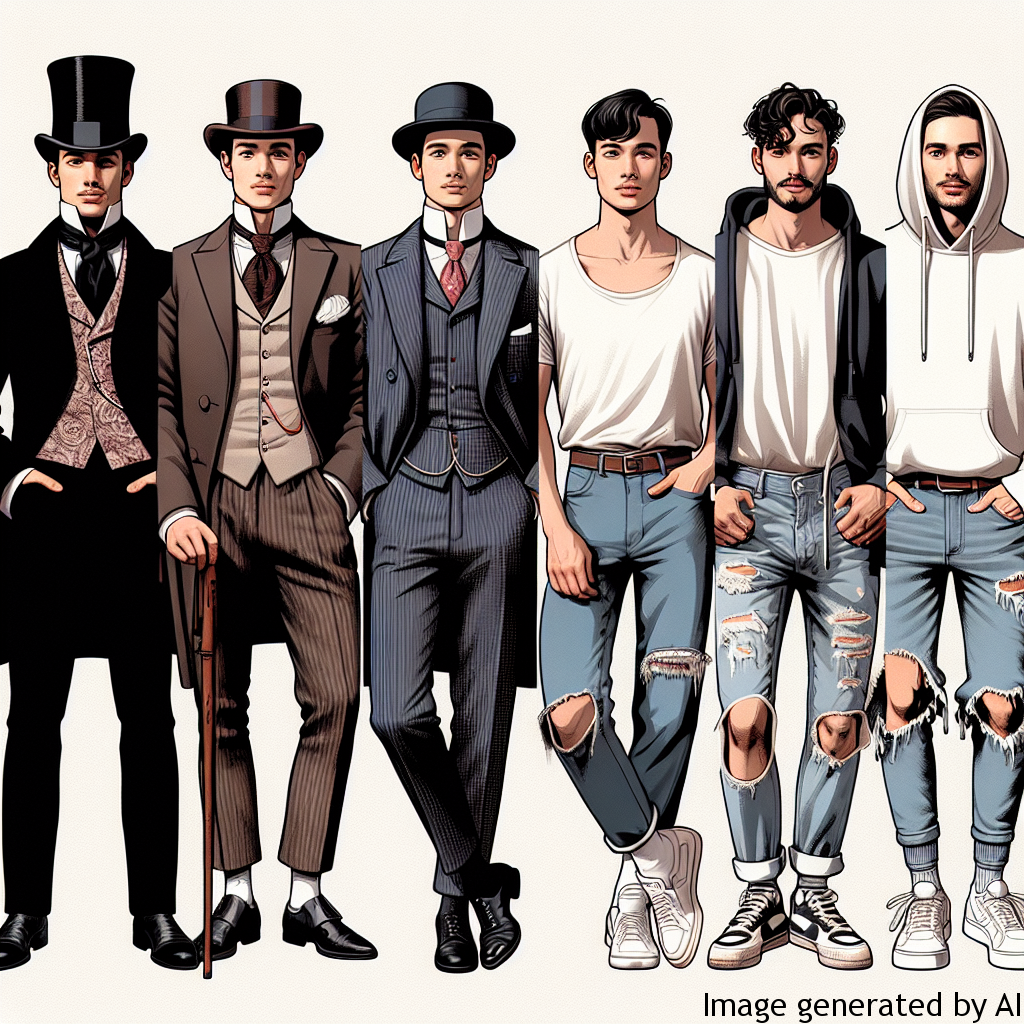Introduction
There is a clear and significant relationship between men’s fashion and social changes, which manifests throughout history. The dynamic nature of male clothing style testifies to the evolution of societal norms, principles, and expectations. By understanding this unique relationship, we can better discern how gender roles influence men and how these roles impact men’s psychological health.
The Representation of Gender Expectations and Its Impact on Men’s Psychological Health
Trends in men’s fashion have long been influenced by a series of societal standards and expectations prevalent in the societal setup. For instance, in the early 19th century, the dominant masculine ideal was encapsulated in the rugged, outdoorsy image, which was reflected in the clothing choices.
Gender Expectations and Self-Image
Consequently, these trends pose an implicit demand on men to conform to the ‘accepted’ image of masculinity. Not conforming to these socially prescribed gender roles can often lead to feelings of inadequacy, insecurity, and low self-esteem. Men’s fashion is therefore not just an aspect of personal style but closely linked to the development of men’s self-image and psychological health.
Examples Of How Gender Roles Influence Men’s Lives
The effects of rigid gender roles and expectations are far-reaching. For example, men who opt for flamboyant or colourful clothing, which is traditionally considered feminine, can face ridicule and marginalisation. Simultaneously, men who stick rigidly to traditional menswear, sometimes even within outdated norms, may find the diversity in their wardrobe limited due to the fear of societal judgment.
Advice For Improving Psychological Health With Regards To Gender Roles
Moving towards a more inclusive and broad-minded perspective towards masculine fashion is necessary. It’s important to remember that each individual has the right to express themselves through fashion without being subjected to prejudice or ridicule. Professional help through counseling or therapy can be sought to deal with the psychological fallout of gender expectations.
Conclusion
The way men’s fashion has evolved over the years provides clear insight into the shifting societal landscape. As gender expectations continue to evolve, so too should our understanding and acceptance of varied expressions of masculinity. Addressing the influence of gender roles is not just about advocating for unique sartorial decisions, but also about promoting healthier and happier lives for men.

